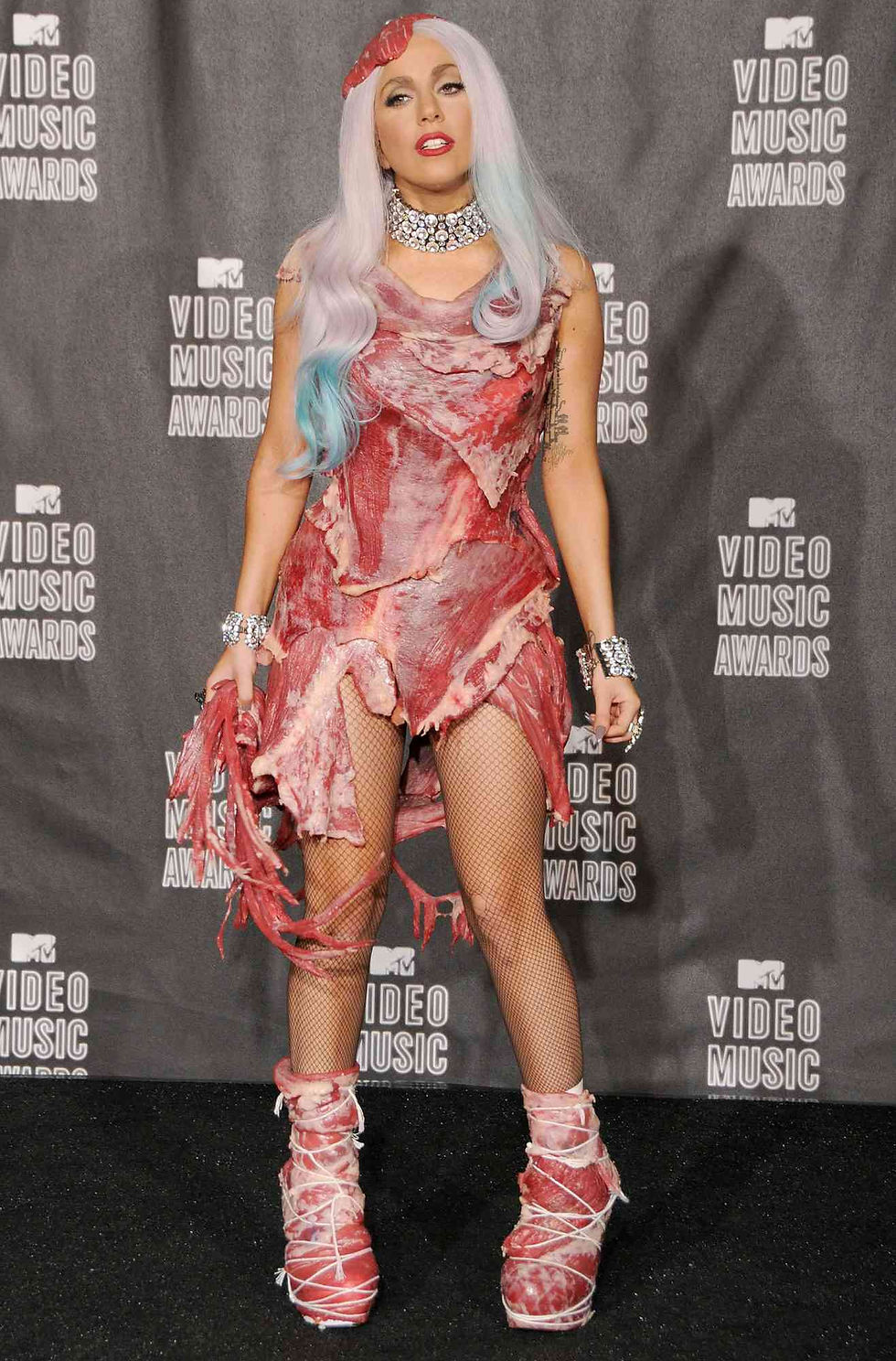Fashion & Culture, and how it's appropriated...
- Chloe Yurie Ha
- Mar 8, 2023
- 4 min read
Remember when Kim Kardashian wore Marylin Monroe’s dress to the Met Gala while publicizing her rapid weight loss and the media went crazy? Or when Gwen Stefani and her bandmates in 2012 faced criticism for appropriating Native American culture in their "Looking Hot" video? Or when Katy Perry performed at the AMAs in 2013 wearing a traditional kimono? How about the iconic, Lady Gaga meat dress?:

Now what do all of these things have in common? There are a lot of ways these come together - being canceled on the internet is also a huge common denominator - but specifically, the way the blend of fashion and culture blends together. Fashion is not an isolated factor of clothing or accessories but it is connected to our life in every aspect and among them culture is the most significant. Fashion influences our lifestyle and is influenced by technology (social media), art, and modernization amongst many other things.
Fashion and culture are deeply intertwined, with fashion serving as a reflection of the culture from which it originates. Fashion not only reflects cultural values, beliefs, and customs, but it also shapes them by influencing the way people dress and present themselves.
Fashion designers and brands draw inspiration from a variety of cultural sources, including traditional dress, music, art, and history. But as much as this amalgamation of ideas and styles can lead to a rich exchange of creativity and ideas, but it can also lead to cultural appropriation. Take Katy Perry for example: her wardrobe for her AMA’s performance of “Unconditionally” was very explicitly inspired by traditional kimonos. Her inspiration also led her to receive comments such as “Loved the cultural authenticity of Katy Perry's #AMAs performance. She nailed the traditionally ignorant costume of a white pop singer” on Twitter.
Now what is cultural appropriation?
Cultural appropriation refers to the “practice of taking elements of a culture without understanding or respecting their significance or context,” most often for the purposes of profit or fashion trends.
In recent years, the fashion industry specifically has faced numerous examples of cultural appropriation and numerous fashion brands have been called out for appropriating cultural elements, often leading to public backlash and boycotts. Some designers and brands have responded by working with cultural consultants and ensuring that they are giving credit to the cultures that inspire their designs. However, others continue to appropriate cultural elements without regard for their origins or significance.
Just to name a few, Gucci was accused of cultural appropriation over a headscarf named “Indy Full Turban” in 2019. The headpiece, which was sold on Nordstrom’s site, changed the product’s name to “Indy Full Head Wrap” before withdrawing from the stores and sites. This headpiece was a part of Gucci’s fall 2018 RTW collection, the same runway that featured the contentious balaclavas.
Later, the Sikh Coalition tweeted its disappointment with Gucci and Nordstrom, writing, “The Sikh turban is not a fashion accessory, but it is also a sacred religious article of faith.” We hope that more can be done to recognize this critical context. #appropriation.”

Even Calvin Klein in 2019 released a commercial featuring Bella Hadid and Lil Miquela, the Instagram-famous digital avatar. However, fan outrage accusing the fashion house of queer-baiting prompted the design business to make an apology.
As described in (1), “The 30-second commercial, which debuted on May 16, begins with Bella standing alone in a Calvin crop top and shorts, and is soon joined by Lil Miquela. A voice-over begins as the model and robot turn to face one other: “Life is about opening doors.” Creating new dreams that you never knew could exist.” Bella pulls Lil Miquela in for a kiss as the audio gives way to music, and the camera slowly fades to black.”
Eventually Calvin Klein did, releasing a statement involving their response to Bella Hadid’s video specifically and saying: “The statement went on by saying “We understand and acknowledge how featuring someone who identifies as heterosexual in a same-sex kiss could be perceived as queer-baiting,” Calvin Klein wrote. “As a company with a longstanding tradition of advocating for LGBTQ+ rights, it was certainly not our intention to misrepresent the LGBTQ+ community. We sincerely regret any offense we caused.”
But this now raises the question…
How many of you guys wear Calvin Klein today? How many of you still look at Gucci as some super-expensive, super-limited luxury brand? Or listen to Katy Perry’s Music?
It is important for fashion designers and brands to recognize the impact of cultural appropriation on marginalized communities and to take steps to avoid it. This includes educating themselves about the cultures they are drawing from, working with members of those communities to ensure their designs are respectful and appropriate, and giving credit where credit is due. By doing so, the fashion industry can continue to draw inspiration from cultural sources while also honoring and respecting their significance.
As consumers, it’s important to acknowledge this relationship of fashion and culture, and to look into the ethics of certain companies before wearing the next-best-thing in fashion.
Sources:
(1)https://www.lifestyleasia.com/ind/style/fashion-houses-cultural-appropriation-and-fashion-gaffes/
(2)https://www.marieclaire.com/fashion/g4895/most-controversial-outfits-of-all-time/





Comments